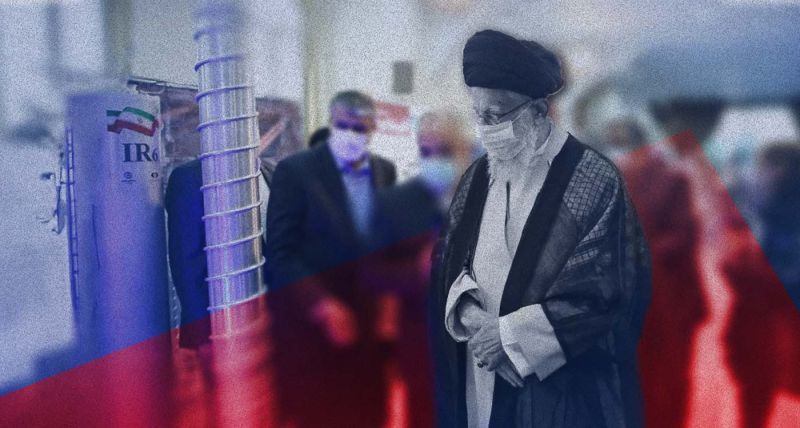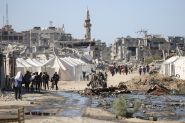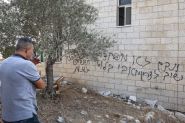- Home
- Arab World
- Centrifuges: The Hidden Core of the Iran-Israel War

©This is Beirut
At the heart of the latest military escalation between Iran and Israel, one word stands out: centrifuges. Central to Iran’s nuclear program, these machines have become the top target of Israeli strikes, aimed at halting Tehran’s advance toward a nuclear weapon. Let’s break it down.
Since Friday, as military tensions between Iran and Israel have erupted into open confrontation, one word has echoed across military briefings and geopolitical analyses: centrifuges. On Wednesday morning, the Israeli military announced fresh strikes on centrifuge production sites near Tehran.
This marks the latest in a series of Israeli attacks targeting Iran’s nuclear infrastructure. The objective: to weaken the Islamic Republic’s ability to enrich uranium for potential military use. But why focus so heavily on these machines?
What Is a Nuclear Centrifuge?
A nuclear centrifuge is a device used to enrich uranium. Naturally occurring uranium is made up mostly of uranium-238, a stable isotope that cannot sustain a nuclear reaction. The sought-after isotope is uranium-235, much rarer (less than 1% of natural uranium), but capable of sustaining the chain reaction needed for both nuclear energy and weapons.
To extract U-235, uranium is converted into a gas, uranium hexafluoride (UF₆), and fed into centrifuges spinning at extremely high speeds. The centrifugal force gradually separates the lighter U-235 from the heavier U-238. Repeating this process through thousands of interconnected centrifuges, called cascades, yields enriched uranium.
Uranium enriched to 3-5% is sufficient to power civilian nuclear reactors. At 20%, it can be used in research reactors or to produce medical isotopes, but it also marks a critical threshold on the path to weapons-grade material. At 60%, as is currently the case in Iran, uranium is dangerously close to the 90% enrichment level required for a nuclear weapon.
This is why centrifuges lie at the heart of global tensions. Uranium enrichment technology is inherently dual-use: it can serve peaceful civilian goals or fuel a nuclear bomb. For this reason, the development and use of centrifuges are strictly monitored by the International Atomic Energy Agency (IAEA).
Iranian Centrifuges: A Strategic Asset for Tehran
Despite official denials, Iran now possesses increasingly advanced nuclear capabilities. According to the IAEA, Tehran holds over 120 kilograms of uranium enriched to 60%, a level dangerously close to weapons-grade material. Raising enrichment to 90% would yield enough fissile material to produce at least one nuclear bomb.
Technically, it would only take a few weeks thanks to Iran’s advanced IR-4 and IR-6 centrifuges, which are significantly faster than the older IR-1 models being progressively phased out at sites like Fordow and Natanz.
The IAEA estimates that if Iran chose to do so, it could produce enough highly enriched uranium for a bomb within 2 to 3 weeks, though developing a functional warhead would still take several months to a year.
Key nuclear sites housing centrifuges include:
- Natanz, the heart of Iran’s nuclear program in central Iran, with over 10,000 centrifuges arranged in around 60 cascades, both above and underground.
- Fordow, near Qom, a heavily fortified site buried under 80 meters of rock and protected by armored doors and air defenses. It contains about 3,000 centrifuges, including IR-4 and IR-6 models capable of enriching uranium to 60%.
- Isfahan, which doesn’t house centrifuges but plays a critical role in converting uranium into uranium hexafluoride (UF₆) gas needed for the enrichment process.
Centrifuges: Israel’s Primary Target
Israel, citing intelligence that Tehran is approaching the “point of no return” toward nuclear weapons, has targeted multiple key nuclear facilities.
The above-ground section of Natanz has reportedly been damaged, and Isfahan has also been struck. Fordow, while not yet directly hit, remains firmly in Israel’s crosshairs. On Wednesday morning, Israeli National Security Advisor Tzachi Hanegbi told Channel 12 that the military operation will continue until Fordow is damaged.
Even without direct strikes, sites like Fordow have suffered major power outages caused by Israeli attacks. Since centrifuges require a continuous, stable power supply, sudden outages can disrupt their operation or damage sensitive components.
Additionally, sanctions and targeted strikes on supply routes have caused severe shortages of spare parts, potentially delaying repairs and restarts by weeks or even months.
Israel has also struck facilities involved in centrifuge production, including a plant near Tehran hit during strikes on the night of June 12-13 and again on Wednesday morning. Over 50 fighter jets participated in these operations, which targeted crucial industrial sites that maintain and replenish centrifuge cascades. According to the IAEA, two buildings in Karaj, near Tehran, manufacturing centrifuge components were destroyed, along with a building at Tehran’s Research Center producing parts.
Key personnel in Iran’s nuclear program have also been targeted. The recent elimination of several experts, including Abdolhamid Minouchehr, a leading designer of next-generation centrifuges, marks a significant strategic setback for Tehran. Restarting operations without these specialists will be a major challenge.
By targeting Iran’s centrifuges, Israel strikes at the heart of the Islamic Republic’s nuclear ambitions. While not all sites have been destroyed, the damage to both infrastructure and personnel could significantly hinder Iran’s uranium enrichment capacity for the foreseeable future. This effort aims to delay Iran’s potential move toward nuclear weapons at a time when regional stability is more fragile than ever.
Read more





Comments